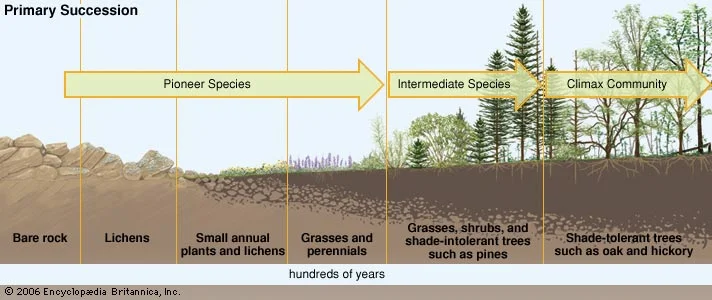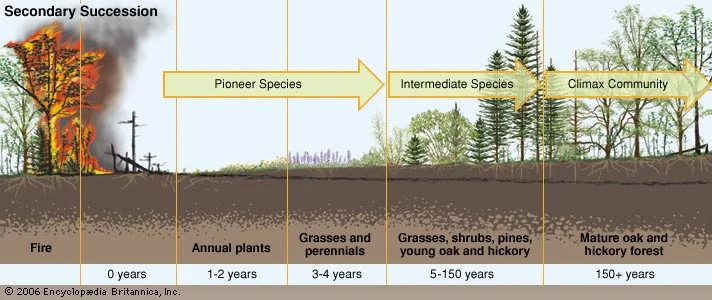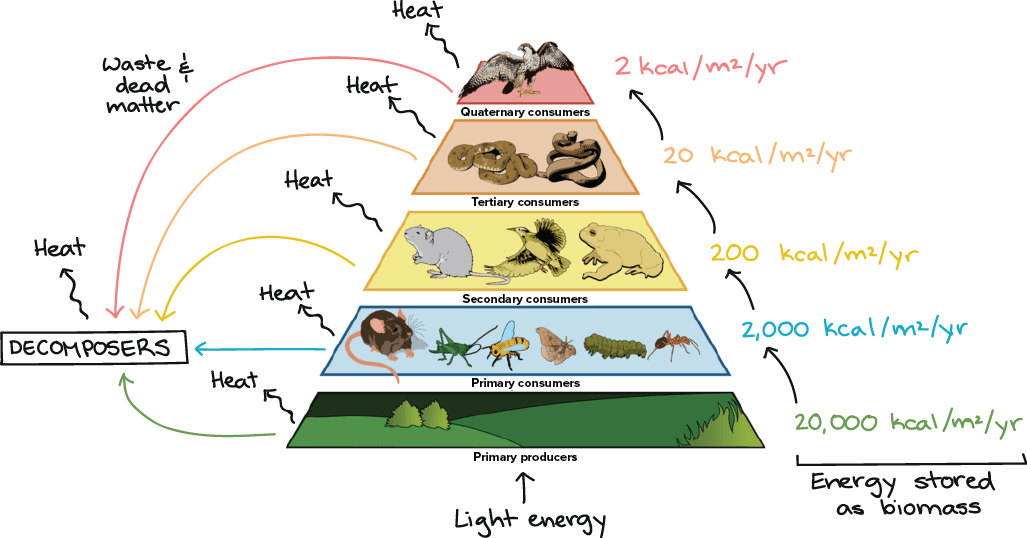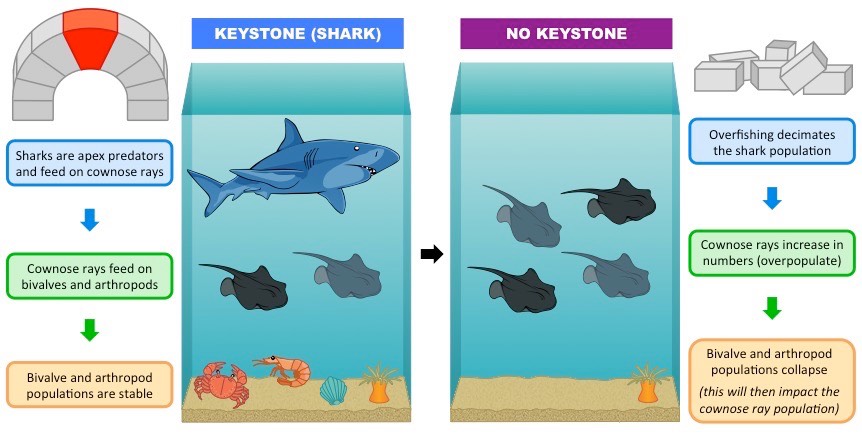Ecological Succession
Ecological succession describes how species change over time in an ecosystem. Usually, as time progresses, species diversity (the number of different species living in the area) and total biomass (the total mass of all organisms) increase.
After many, many years, a climax community comes to be. A climax community usually persists unchanged for a long time until a catastrophic event, such as a flood or fire, destroys it.
There are many different reasons for changes in the composition of a community:
- Substrate texture is the composition of the land. It can change from solid rock to sand and then to fertile soil, where plants can grow. This occurs as rocks erode and organisms energy flows into the soil through decomposition.
- Soil water potential is the maximum amount of water the soil can hold at one time. This changes as the substrate texture changes.
- The amount of light also has an effect on plants in the ecosystem.
- Crowding depends on how dense the population is. At some point, there simply isn't enough space to support all the individuals in the population.
As described in part 1, the first species to grow in a new habitat are called pioneer species, or r-selected species. They usually grow in a newly created habitat (such as a volcanic island) or in a habitat that was destroyed after a disaster (such as a fire or flood). Primary succession occurs in newly created environments and secondary succession occurs in environments that were previously destroyed by a natural disaster.


Pioneer species can live in very harsh conditions and are the first species that have an effect on the environment. Unfortunately, pioneer species are very unstable and their population size can rapidly crash. Eventually, K-selected species replace r-selected species. The climax community is usually a K-selected species, and the climax community will survive for thousands of years.
The Flow of Energy
Energy flows through an ecosystem by passing through animals and eventually reaching decomposers.
Food chains show who eats who in an ecosystem. The lines point from an organism to the predator of that organism. Food webs are big food chains. They show all the organisms in an environment, all the predators, and all the decomposers. Arrows show the direction of energy flow.
Trophic levels are categories of organisms. The categories are:
- Primary producers are photoautotrophs and chemoautotrophs. Photoautotrophs can produce their own food by using light energy, and chemoautotrophs can produce their own food by using molecules such as H2S. Plants, photosynthetic protists, and cyanobacteria are in this group.
- Primary consumers eat the primary producers and are herbivores. They cannot make their own food and so must feed on other organisms.
- Secondary consumers consume the primary consumers. They are carnivores.
- Tertiary consumers are secondary carnivores who consume the secondary consumers.
- Detritivores are decomposers. They consume detritus (dead plants and animals). They allow the energy from dead organisms to be recycled and put back into the ecosystem.

Ecological pyramids show how trophic levels interact with each other. As suggested in the name, ecological pyramids are shaped like pyramids and display the order of energy transfer.

REMEMBER! On average, only 10% of the energy in one trophic level is transferred to the next level (the one right above it). The other 90% is used by the organism for its activities.
Species Diversity
A dominant species is the species in the community that is composed of the largest number of individuals.
A keystone species is a species that had a strong effect on the health of the community. If it is removed or the population of the species decreases, all the other species in the community will also be affected.
An invasive species is a species that comes from outside an environment and is better suited to the environment than the other species already living there. This could be because of a lack of natural predators or just because it is a better competitor for resources.

